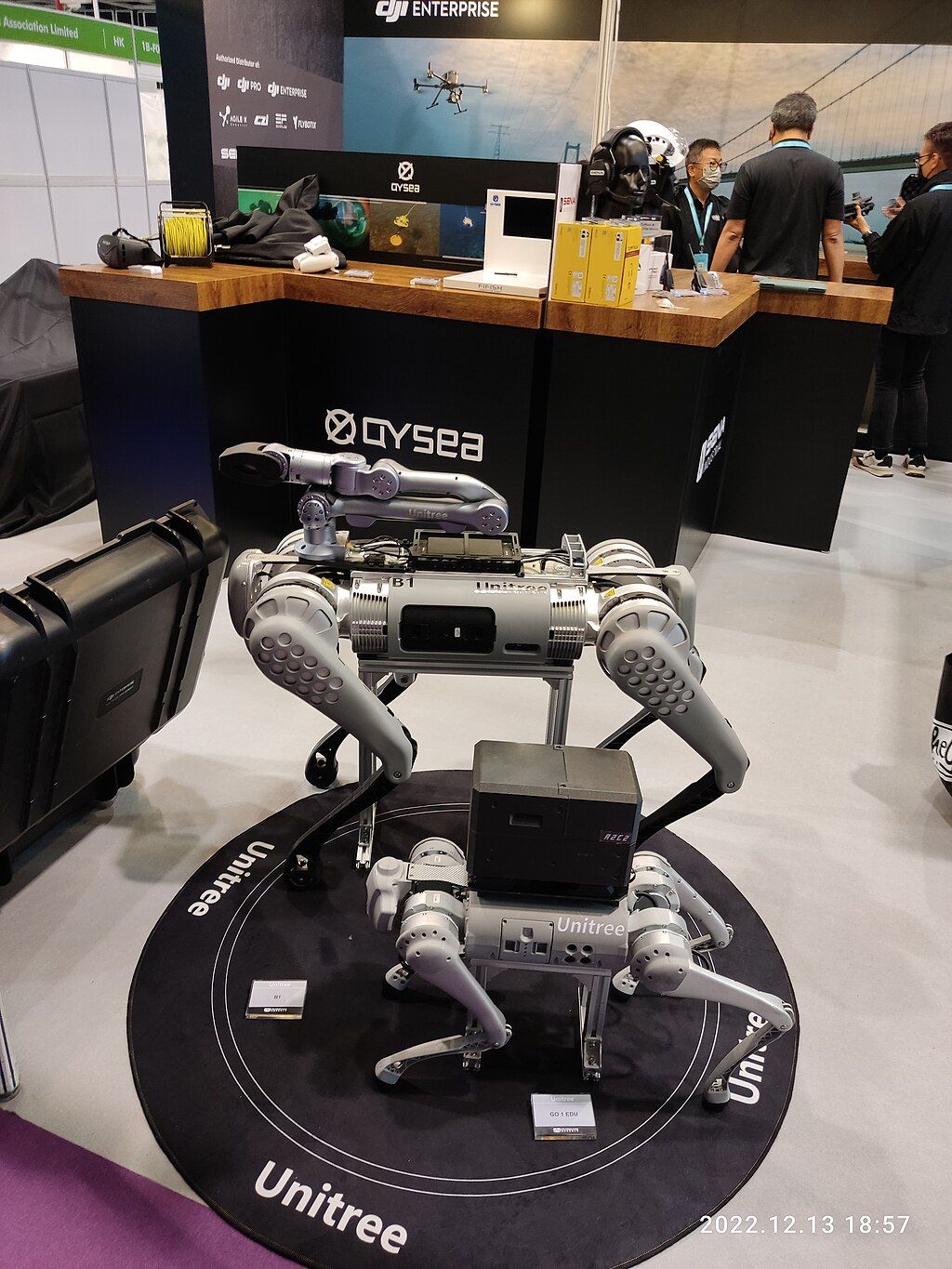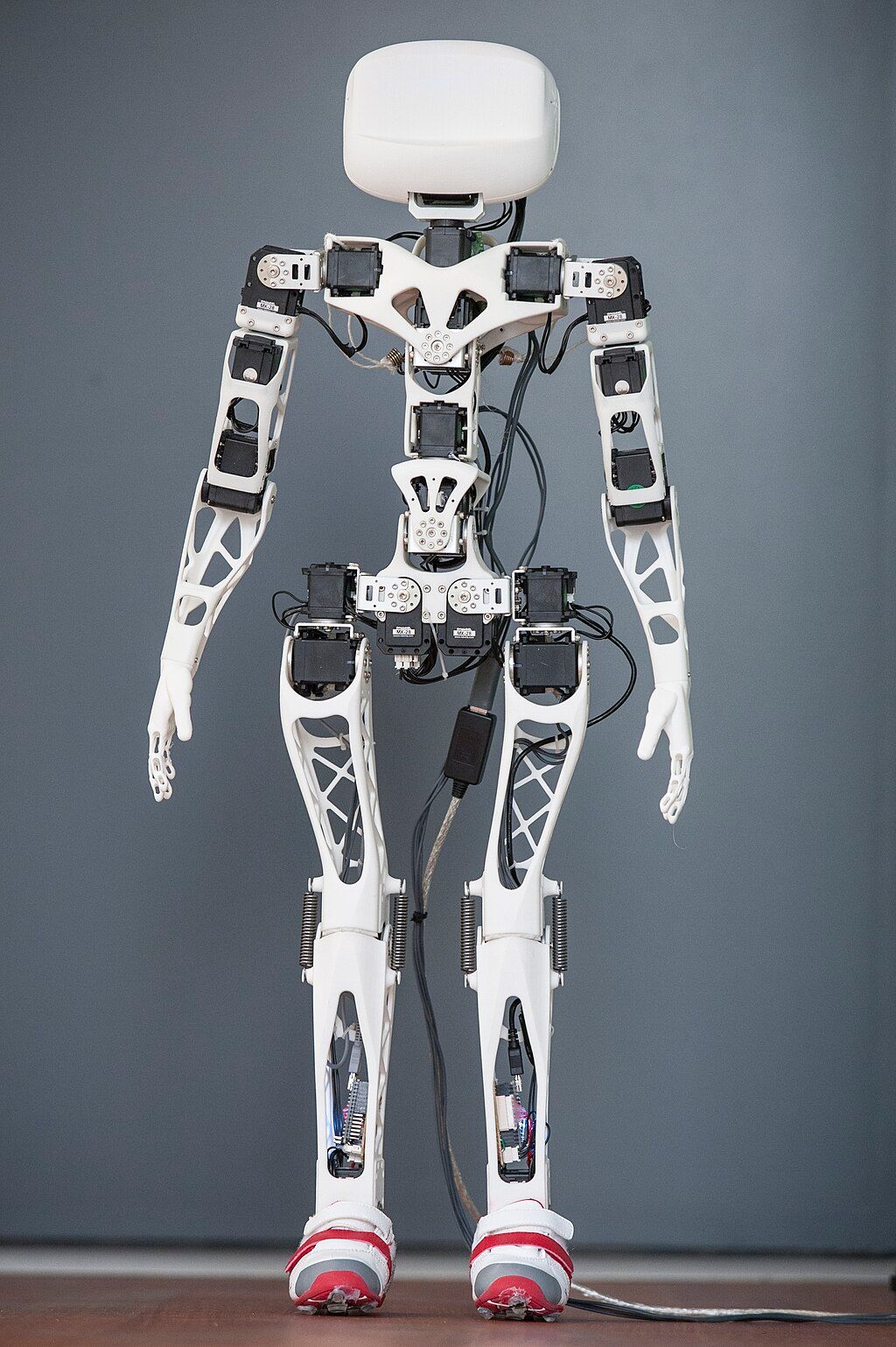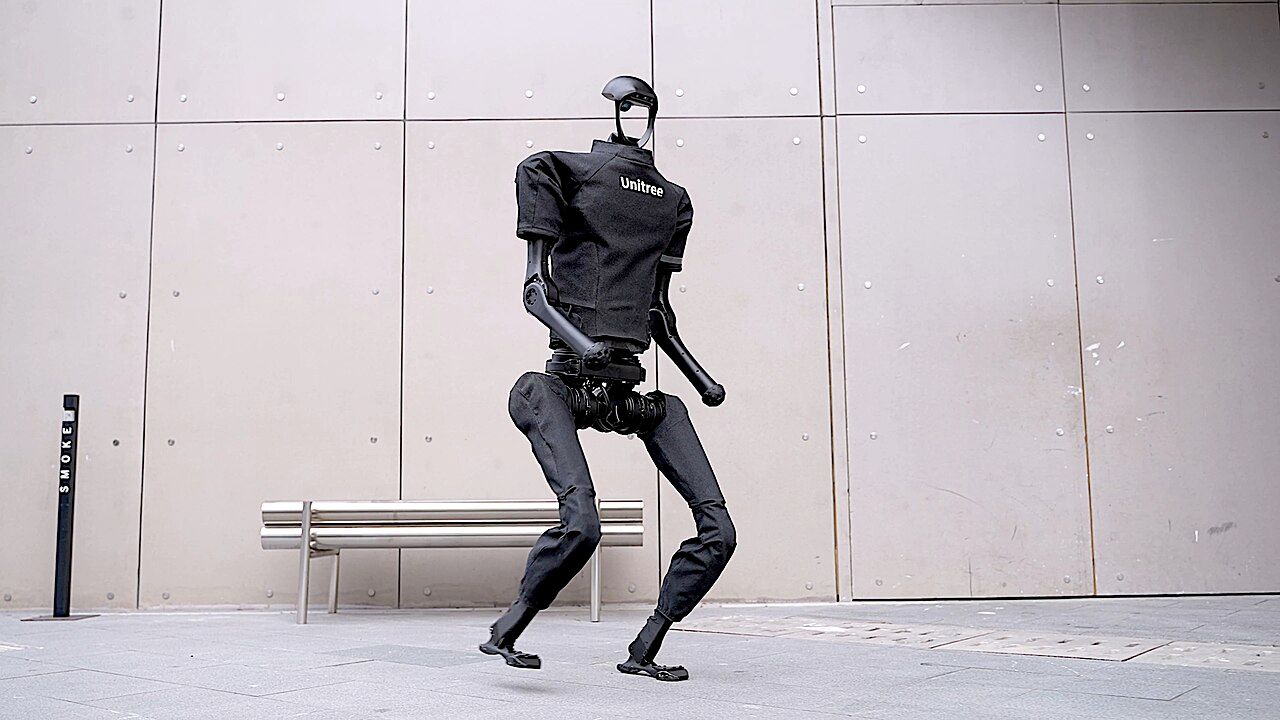The race to design and market effective humanoid robots has witnessed genuine developments, with Unitree emerging as a notable player. Their latest offering, the Unitree G1, priced at a competitive $16,000, is generating considerable buzz for its advanced capabilities and affordability. This newest model is a testament to the rapid evolution in the field, aiming to deliver high functionality at a fraction of the cost of previous models. The G1 not only undercuts the price of its predecessor, the H1, by a staggering 90% but also promises a host of innovative features geared towards mobility, manipulation, and interaction.
Unitree G1 Features

"HK WCN 灣仔北 Wan Chai North 香港會展 HKCEC 建造創新博覽會 Construction Innovation Expo December 2022 Px3 118" by AKAMGO yalms is licensed under CC BY-SA 4.0.
Design and Size
The Unitree G1 stands out with its compact and ergonomic design. Measuring approximately four feet two inches tall, it is notably smaller than its predecessor, the nearly six-foot H1. This reduced size contributes to its agility and versatile applications in both domestic and industrial environments. The G1 features an innovative "hollow joint" system within its 23 to 43 joint motors, which delivers a heightened range of motion and the ability to perform complex tasks more efficiently. These features are encased in a body that can compactly fold down for easy transport, making the G1 not only powerful and capable but also conveniently portable.
Battery Life and Mobility
Equipped with a 9,000mAh quick-release battery, the G1 offers a substantial operating time of about two hours per charge. This makes it suitable for a variety of tasks without frequent interruptions for recharging. The G1’s mobility is impressive, capable of running at speeds up to 4.5 mph. This mobility is supported by advanced joint technology that allows for large-scale movements, equipping the G1 to handle everything from workplace tasks to more robust physical interactions, such as recovering from impacts like kicks and punches.
Comparison to Previous Models and Competitors

"Open-Source 3D printed Poppy humanoid robot" by Inria / Poppy-project.org / Photo H. Raguet. is licensed under CC BY-SA 4.0.
Price Comparison with Previous Models
The G1's price point marks a significant reduction from Unitree's earlier models, most notably compared to the H1's initial price of $90,000. Now priced at $16,000, the G1 represents a shift towards making advanced humanoid robotics more accessible to a broader range of users, from research labs to possibly even private homes. This pricing strategy reflects a growing trend in the robotics industry to develop high-functionality robots at cost-effective prices, expanding the market potential of humanoid robots.
Features Comparison with Competitors
The Unitree G1 holds its ground robustly against competitors like Boston Dynamics' Atlas and Tesla’s Optimus in terms of technological advancements and affordability. While Atlas and Optimus demonstrate high capabilities, the G1's combination of a lower price, practical applications, and advanced learning algorithms positions it competitively in the market. Its ability to perform delicate tasks with precision—such as handling tools, opening bottles, and even more precise activities like soldering—mirrors the skillsets of more expensive models. Additionally, its robust design allows for resilience against physical disturbances, a comparative advantage in scenarios requiring durability.
Market Impact
The introduction of the G1 at a significantly lower price point than previous models like H1 and competitive brands positions Unitree to potentially disrupt the humanoid robot market. By offering advanced capabilities within a more affordable price range, Unitree is creating opportunities for wider adoption in educational, industrial, and possibly even residential settings. The G1's capabilities and pricing strategy are likely to pressure other market players to innovate and adjust prices accordingly, fostering a more competitive market environment that could accelerate the development and diversification of humanoid robots across various sectors.
Technological Innovations of the G1

"Humanoid Robot Uprising" by jurvetson is licensed under CC BY 2.0.
"Hollow Joint" Wiring and Joint Motors
The Unitree G1 introduces a significant advancement in humanoid robotics through its innovative use of "hollow joint" wiring. This design choice not only streamlines the robot's internal structure, reducing potential wear and tear, but also enhances its movement capability. The flexibility afforded by this technology allows the G1 to achieve a wide range of motion that closely mimics human actions. Accompanying this feature are the 23 to 43 joint motors varying across different models of G1, amplifying its adaptability and dexterity. These motors provide the robot with the ability to execute tasks requiring high precision, from basic household activities to more complex industrial functions.
Artificial Intelligence and Learning Capabilities
The G1's artificial intelligence is based on a blend of imitation and reinforcement learning, enabling it to adapt to new tasks through observation and practice. This AI framework facilitates continuous learning and improvement, making the G1 an evolving platform capable of handling increasingly complex tasks over time. The robot's AI is further bolstered by high-performance computing power and connectivity options like Wi-Fi 6 and Bluetooth 5.2, ensuring seamless communication and updates. This setup not only enhances the robot’s response and processing capabilities but also allows for real-time adjustments and flexibility across different applications.
Practical Applications and Limitations

"NASA R5 Valkyrie humanoid robot" by Futurilla is marked with CC0 1.0.
Household and Commercial Uses
The G1 humanoid robot is tailored for versatility, finding its place in both household and commercial settings. In domestic environments, it can perform everyday tasks such as opening bottles, handling food items, and potentially assisting with more intricate tasks like electronics repair. For commercial use, the G1 excels in roles that require precise manual dexterity, from assembly line work to delicate object handling. Its compact size and significant joint movement range make it ideal for high-detail tasks in confined spaces. Additionally, the robot's design and capabilities suggest potential uses in fields such as elderly care and hospitality, signaling a future where humanoid robots are commonplace assistants in both homes and businesses.
Limitations and Challenges
Despite its array of capabilities, the G1 faces certain limitations that could affect its broader adoption. The most notable is its battery life, which stands at about two hours on a full charge. This limitation requires frequent recharging intervals, potentially interrupting tasks, especially in a commercial setting. Furthermore, while its "hollow joint" wiring and multiple motor designs offer expansive movement, the robot's overall physical robustness in high-stress environments remains to be tested extensively. The pricing, though significantly reduced compared to its predecessors, may still be a barrier for individual consumers, although it is competitively set for research and industrial sectors. Lastly, the ongoing development and refinement of its AI capabilities are critical to ensuring that the G1 can perform consistently and adaptively in real-world applications, a challenge that requires continuous technical support and updates from Unitree.






